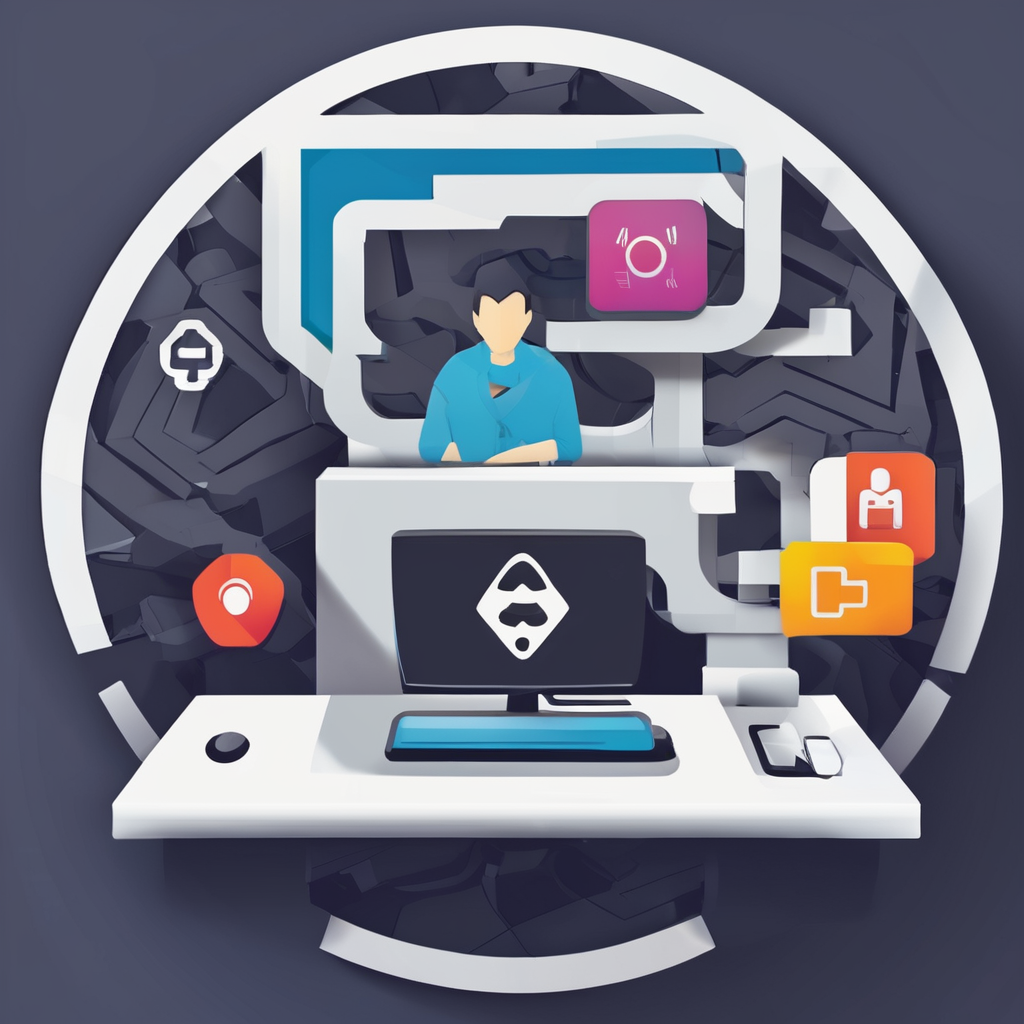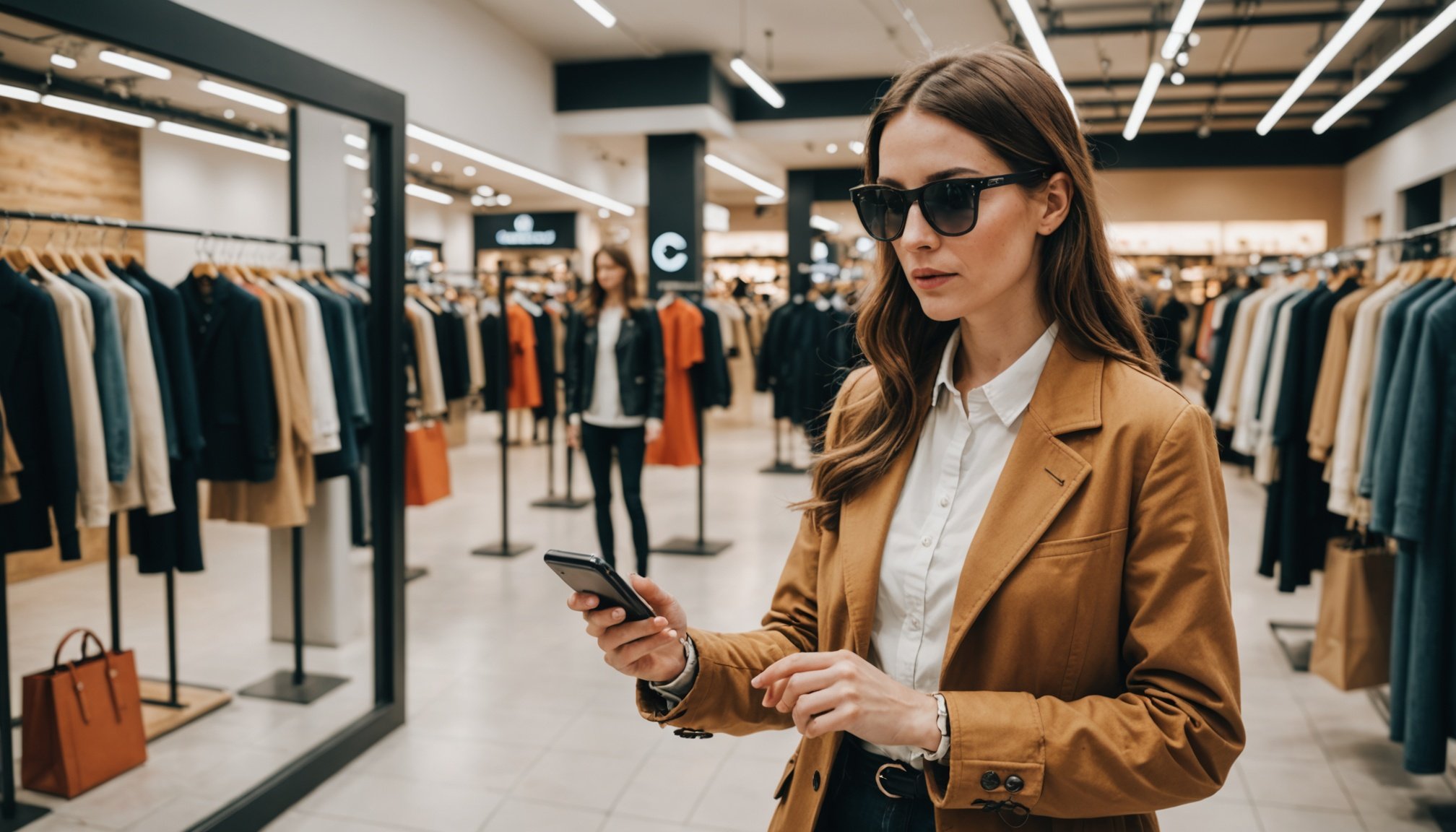Overview of Augmented Reality in Fashion Retail
Augmented reality (AR) is revolutionising fashion retail by seamlessly blending digital content with the physical shopping experience. By overlaying virtual garments onto real-world environments or customers, AR provides a unique interactive experience. This technology enhances virtual shopping, allowing consumers to visualise products without physically trying them on, significantly impacting buyer confidence and decision-making.
Historically, AR’s journey in the fashion sector began with simple features like virtual dressing rooms. Early adopters saw this as a novelty; however, the practical benefits quickly became apparent. As technology advanced, so did the sophistication of AR, moving from basic overlays to intricate, lifelike projections that engage customers deeply.
Also to read : Discovering shopper behavior: leading machine learning strategies for analyzing uk retail trends
In terms of market impact, the current size of the AR platform in fashion retail has seen significant growth. The sector’s value runs into billions, driven by increased consumer demand for virtual shopping solutions and technological innovations. The potential for further expansion is immense, as brands continue to invest in AR technology to improve customer engagement and personalisation. With more companies exploring AR, the integration of this technology in fashion is not just a trend but a future staple, bridging the gap between online and offline shopping experiences.
Key Applications of Augmented Reality in Fashion
Augmented Reality (AR) is reshaping the fashion industry through innovative applications. Key areas include virtual try-ons, interactive experiences, and enhanced in-store navigation.
Additional reading : Unlock your creativity: text to video made simple with ai
Virtual Try-On Technology
Virtual try-ons are revolutionising the fashion shopping experience. This technology allows consumers to visualize clothing and accessories on their bodies in real time without physically trying them on. Virtual try-ons save time, provide a personalised experience, and reduce the hassle of returns. The accuracy of these AR applications is crucial, ensuring a near-perfect match between the digital preview and the actual product.
AR in Store Navigation
Navigating large department stores can be overwhelming. Using AR, retailers now offer interactive navigation tools that map out the retail space on a shopper’s mobile device. These applications help guide customers directly to specific products. This innovation enhances convenience and significantly improves user experience by reducing the effort required in locating items.
Interactive Lookbooks
The evolution of lookbooks into interactive formats provides new opportunities for customer engagement. By integrating AR, fashion brands offer dynamic experiences where customers can see outfits in a real-world context through their devices. This immersion not only captivates users but also influences purchasing decisions, as it provides a better understanding of the product’s fit and style, fostering greater engagement with the brand.
Case Studies of Fashion Brands Utilizing AR
Augmented Reality (AR) is revolutionising the shopping experience for many fashion brands. Some leading brands are using AR to create immersive shopping experiences, transforming consumer interactions.
ASOS, a significant player in the UK fashion market, implemented an AR tool called “See My Fit,” allowing customers to visualise clothes on different body types. This innovative approach significantly enhanced online shopping by tackling the challenge of visualising fit and look remotely. The response from consumers was overwhelmingly positive, showcasing the potential of AR in improving customer satisfaction.
Chanel, another luxury fashion brand, utilises AR for an interactive shopping experience. Their app enables users to virtually try on make-up using facial mapping technology. Customers appreciate the ability to experiment with cosmetics digitally, reducing the need for in-store testing.
Emerging brands like Monki have also begun integrating AR to stand out. They launched an AR-based campaign allowing users to project virtual clothing items onto a mirror in their homes. This approach is unique in a crowded market, as it differentiates through innovation and provides consumers with an exciting new way to engage with fashion.
In summary, both established and emerging brands are strategically leveraging AR to enhance their market presence and improve shopper engagement.
Enhancing User Experience through AR
Augmented Reality (AR) transforms the user experience by adding a layer of excitement and personalization to shopping. AR features like virtual try-ons, product visualization, and immersive storytelling are increasingly becoming popular tools for customer engagement. For instance, AR allows customers to see how a piece of furniture might look in their living room before purchasing, fostering a more informed and personalized decision-making process.
Personalization is key in these experiences. By allowing users to interact with products in a way that feels tailored to their preferences, AR enhances satisfaction. The result is a shopping journey that goes beyond simple transactions, creating memorable interactions that resonate with consumers.
Feedback from users of AR shopping experiences often highlights increased satisfaction. Many appreciate the ability to engage with products uniquely and personally. Retailers can analyze this feedback to further refine AR applications, aiming for even greater customer satisfaction and loyalty.
Ultimately, AR not only elevates the user experience by making it more engaging and customized but also empowers customers to make more informed choices, benefiting both consumers and retailers alike. Through effective use of AR, businesses can achieve a delicate balance of enhancing customer engagement while providing valuable personalization.
Benefits of AR for Consumers and Retailers
Augmented Reality (AR) technology is reshaping the shopping landscape with significant benefits for both consumers and retailers, fundamentally altering customer expectations and retail strategies.
For consumers, AR offers unparalleled convenience and improved decision-making. Shoppers can visualise products in their real-world environment before making a purchase, reducing uncertainty. For example, customers can see how a piece of furniture fits within their living space or try on virtual clothing to ensure style and size fit. This leads to more informed decisions and can significantly enhance the shopping experience.
From a retailer’s perspective, AR technology provides numerous advantages. Enhanced customer engagement often translates to increased sales and strengthened brand loyalty. When consumers have the opportunity to interact with products in an AR environment, they tend to develop a deeper connection to the brand and its offerings. This not only boosts immediate sales but also cultivates long-term customer relationships.
The broader impact of AR is seen in how consumer benefits and retailer advantages evolve into a shift in shopping behaviour. Customers are beginning to expect interactive and immersive experiences, compelling retailers to adopt AR solutions to stay competitive. As AR continues to integrate into daily shopping routines, retailers must harness this technology to meet rising expectations and sustain consumer interest.
Current Trends in AR for Fashion Retail in the UK
Augmented Reality (AR) is revolutionising fashion trends through immersive experiences. Here’s how it’s shaping retail in the UK.
Technological Advancements Driving AR
Recent AR technology advancements, such as enhanced graphics and real-time rendering, enable consumers to virtually try on outfits. Retailers utilise features like AR mirrors and mobile apps to enhance shopping experiences, making it easier to envision oneself in new styles without physical fittings. These technologies drive engagement and reduce return rates, making AR an essential tool for modern fashion retail.
Consumer Behavior Shifts in Virtual Shopping
As AR technology becomes more prevalent, consumer behaviour is shifting markedly. Shoppers now expect quick, seamless virtual experiences. AR offers a touch of personalisation, allowing consumers to explore fashion trends from home, try out styles in real time, and make informed purchasing decisions. This digital transformation captures tech-savvy shoppers and meets their increasing reliance on e-commerce.
The Future of AR in Fashion Retail
The future outlook for AR in fashion retail is promising. As technology evolves, expect further innovations like enhanced gesture recognition and more interactive AR environments. These trends will likely redefine how consumers interact with fashion brands, promoting more sustainable shopping practices by reducing physical inventories and waste. Retailers adopting AR will remain competitive and lead in transforming the fashion retail landscape.










